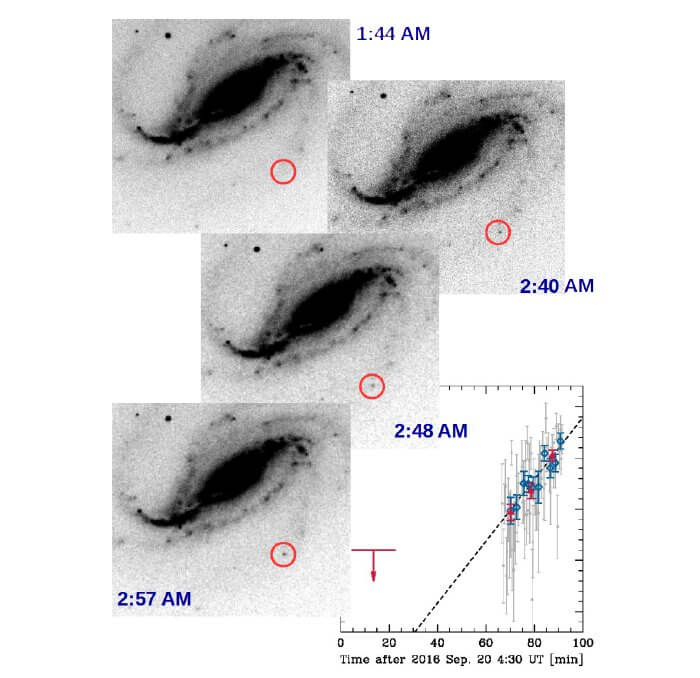
It would seem, what only well-documented facts of cosmic phenomena have not yet to science. However, in space there are many interesting things that scientists know, but nonetheless never seen in person. It also turns out that a witness of these phenomena can be absolutely anyone. Not necessarily professional, but quite a common Amateur astronomer, like Victor from Buso Argentine city of Rosario tested a new camera and by accident received the first ever real photo of passage of a star in a supernova.
Buso became the first person to receive the optical (visible) light image before and after the “shock wave” caused by the exploding star. This moment is exactly the moment when a star explodes and the supersonic shock wave from the core of the star breaks the surface, causing very rapid heating of its gas shell and high brightness. In other words, we are talking about the very first outbreak in the supernova explosion.
This phenomenon is incredibly difficult to capture, because so very quickly it is happening. Also, you need to get on it at the right time, and to predict it is impossible, at the same time the effect of internal shock waves lasts a very small amount of time. Professional astronomers have tried to catch this moment very many years, but always to no avail.
“What is it like to win the space lottery”, explains Alex Filippenko, Professor of astronomy at the University of California at Berkeley and the head of the team, which was engaged in follow-up of supernovae in the next few months.
So a lot of factors and luck must come together in one place, so you can get whatever got of Buso. He was lucky on 20 September 2016, when Amateur astronomer felt his new camera at 40-cm telescope. As a validation purpose, Buso chose the galaxy NGC 613, located about 80 million light-years away in the southern hemisphere of the sky. Buso thought her the perfect target, because she was right over him.
Within a half hour he took photos of the galaxy 20-second exposure, to avoid distortions caused by nearby city lights. Within the first 20 minutes, all the pictures were the same, but after Buso noticed something – a small point of light located on one of the spiral arms of the galaxy. Has not passed also minutes, as Amateur astronomer realized that he had just photographed something extraordinary.

The negatives of Buso, which show the difference in brightness of a supernova over a period of time
According to professional astronomers, the chance of getting such pictures is 1 to 10, and possibly 100 million.
“The data obtained of Buso, are simply amazing. This is an outstanding example of how useful it can be cooperation between astronomers-Amateurs and professionals,” — said Filippenko.
For further observation of supernovae a team of professional researchers used the power Licsci and Kekkai observatories and two months after the opening of the named object identified SN 2016gkg.
Spectral analysis of the object showed that it belongs to the Type IIb supernova – the former very massive stars which have lost almost all of its mass to the moment of the explosion. Scientists have calculated that this supernova was the star with a mass about 20 times the sun, and then could lose up to three quarters. It has been suggested that this mass could take the companion star. By the time the star was a supernova, its mass was approximately 5 solar.
A longer observation of the object will help astronomers to learn more about the composition of the star before it exploded, and get more information about the bombing itself and possibly find out the fate of the companion star.
“Professional astronomers have been looking for such an event. Stargazing in the first moments of their explosion can provide us information which cannot be obtained any other way,” says Filippenko.
An article about the opening and further preliminary observations of the supernova were published in the journal of the Nuture, of course, with Buso as a co-author of the work.
Amateur astronomer first ever got a picture of the appearance of a supernova
Nikolai Khizhnyak